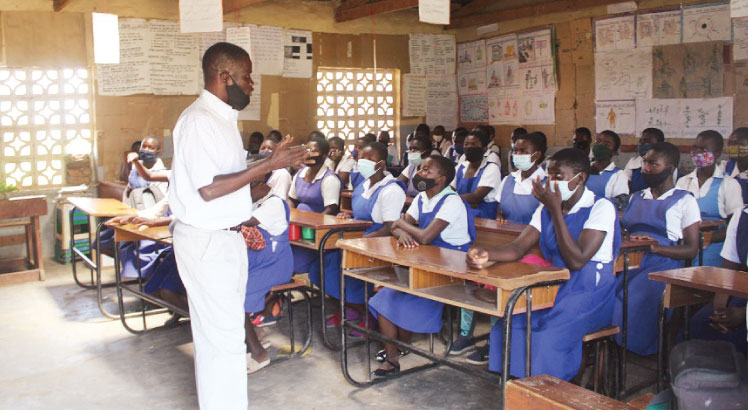Global GDP cut: How safe is Malawi?

The International Monetary Fund (IMF), in the July 9 economic report titled Growing Pains, has further cut the global economic growth projection including Malawi’s major partners sending signals that the country may not be spared. But authorities argue otherwise.
The IMF, in April, projected that the global economy would grow by 3.3 percent. It estimated that Malawi would grow by 4.4 percent a cut from a previous 5.4 percent. Government has pegged economic growth at five percent up from 1.8 percent achieved in 2012.
However, the IMF has shaved world gross domestic product (GDP) growth by 0.2 percentage points to 3.1. Specifically, advanced economies are expected to grow by 1.2 a fall by 0.1 percentage points, while emerging markets are anticipated to grow by five percent down by 0.3 percentage points.
Closer to home sub-Sahara Africa (SSA) growth has been cut to 5.1 percent down from 5.5 percent. South Africa, a major player in the SSA and one of Malawi’s major trading partners is expected to grow by two percent down from 2.8 percent projected in April.
China’s GDP has been cut to 7.8 percent by 0.3 percent while India has suffered a 0.2 percent reduction to 5.6 percent.
Exceptions on the global economic cut are few. The United Kingdom is expected to grow by 0.9 percent which is a positive 0.3 percentage point adjustment. Japan’s growth has also been adjusted upwards by a 0.5 percent to 1.2 percent.
Looking back, since 2007, Malawi GDP has increased comparatively than most economies. Between 2007 and 2012 the country’s economy grew by an average 6.9 percent. Asia grew by 8.5 percent, the EU 1.4, USA 1.8, and SSA 5.1 percent.
But how enmeshed is Malawi in the global economy?
The National Statistical Office (NSO) in the July-December 2012 trade brief said Malawi’s the EU was the major destination for Malawi’s exports for period in the period. The total exports to EU region during this period amounted to K42.8 billion. The Southern Africa Development Community (Sadc) came second with an amount of K36.6 billion and the Common Market for Eastern and Southern Africa (Comesa) was third with K22.7 billion.
According to the brief, in 2011 (last half) Malawi’s top export destinations in that order were: Belgium, Zimbabwe, United Kingdom, Canada, Kenya, China, United States, South Africa, Spain, and Egypt.
In 2012 (last half) the top ten were Canada, South Africa, Belgium Switzerland, China, Russian Federation, the Netherlands, Zimbabwe, Korea Republic and India.
In the period, the country’s major exports were tobacco, uranium, legumes, tea, cotton and sugar.
But Ministry of Trade Sosten Gwengwe says Malawi will not be greatly affected because it mostly trades within the Sadc region.
“If you check the growth rate for Africa we are not as bad as other emerging economies and our major advantage is that we are also trading regionally within Sadc and this gives us a chance to survive the economic downturn,” said Gwengwe.
He added that African countries should focus on trading within the continent because many countries are showing signs of improving beyond predicted proportions.
Malawi Confederation of Chambers of Commerce and Industry (MCCCI) president Matthews Chikankheni concurred with Gwengwe that Malawi will not greatly feel the effects of the slow economic growth because it is not a major player on the world economic market.
“I feel that as a country we will not feel the pinch because we are not a major player in the world economy. If anything we might see that other countries who normally give us aid might reduce the amount of money they normally assist us with due to the slow growth,” said Chikankheni.
He said Malawi has got an advantage because most of its trading partners are within the Sadc region and this gives it an edge to survive any shocks.
Regardless of the arguments that Malawi is cushioned against global economic trends, Economics Association of Malawi (Ecama) notes the 4.4 GDP growth projections is too high.
Earlier while commenting on the projection, Ecama executive director Nelson Mkandawire, noted that although last year was a difficult, but to more than double our growth rate from 1.8 percent to 4.4 percent this year is hard to achieve.
He argued that doubling the growth rate means doubling our productivity which is hard to achieve.
He feared slippages in fiscal policy since we are heading into an elections’ year. He doubted that the achievement of the targeted 14 percent inflation rate will be achieved.





